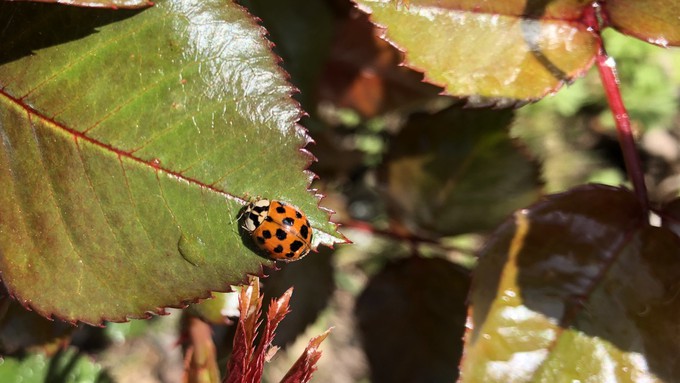
Bohart Museum hosts afternoon of insect fun

Lady beetles may be the best known, but species of beetles cover a wide spectrum. Learn about some of them Sunday at UC Davis. Kathy Morrison
Beetles are more than lady bugs — as wonderful as those spotted insect stars are. Beetles form the order Coleoptera, the largest and most diverse group of insects, with more than 250,000 described species.
This weekend, the researchers at the Bohart Museum of Entomology will show visitors a sample of the amazing beetle species that inhabit our world.
The museum on the UC Davis campus holds its first open house of 2023 this Sunday, Jan. 22, from 1 to 4 p.m. The event is free and open to the public. (Parking on Sundays is free, too.)
This is a family-friendly event, including an arts-and-crafts activity involving a drawing of a carrion beetle.
The Bohart Museum is located in Room 1124 of the Academic Surge Building, 455 Crocker Lane, on campus. It houses more than 8 million insect specimens, as well as a live petting zoo. (Ever petted a Madagascar hissing cockroach?)
UC Davis graduate student and researcher Tracie Hayes (the artist of the carrion beetle) will be a presenter Sunday, along with beetle specialist Fran Keller, biology professor at Folsom Lake College, and Cal Fire bark beetle specialist Curtis Ewing.
For more on the Bohart Museum, go to https://bohart.ucdavis.edu/
Comments
0 comments have been posted.Sacramento Digs Gardening to your inbox.
Food in My Back Yard Series
April 1: Don't be fooled by these garden myths
March 25: Fertilizer tips: How to 'feed' your vegetables for healthy growth
March 18: Time to give vegetable seedlings some more space
March 11: Ways to win the fight against weeds
March 4: Potatoes from the garden
Feb. 25: Plant a fruit tree now -- for later
Feb. 18: How to squeeze more food into less space
Feb. 11: When to plant? Consider staggering your transplants
Feb. 4: Starting in seed starting
Sites We Like
Garden Checklist for week of March 30
Your garden doesn’t mind April showers. Get busy now to enjoy those future flowers.
* Get ready to swing into action in the vegetable garden. As nights warm up over 50 degrees, start setting out tomato, pepper and eggplant transplants.
* From seed, plant beans, beets, cantaloupes, carrots, corn, cucumbers, melons, pumpkins, radishes and squash. (Soak beet seeds overnight in water for better germination,)
* Plant onion sets.
* In the flower garden, plant seeds for asters, cosmos, celosia, marigolds, salvia, sunflowers and zinnias.
* Transplant petunias, zinnias, geraniums and other summer bloomers.
* Plant perennials and dahlia tubers for summer bloom.
* Transplant lettuce and cabbage seedlings.
* April is the last chance to plant citrus trees such as dwarf orange, lemon and kumquat. These trees also look good in landscaping and provide fresh fruit in winter.
* Smell orange blossoms? Feed citrus trees with a low dose of balanced fertilizer (such as 10-10-10) during bloom to help set fruit. Keep an eye out for ants.
* Apply slow-release fertilizer to the lawn.